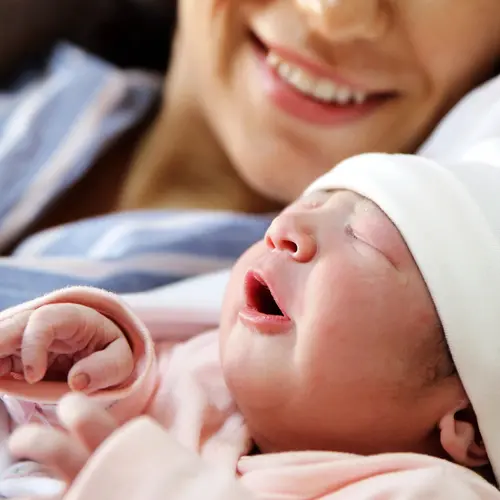If you suspect you’re pregnant, a pregnancy test can be a great way to confirm your suspicions. Many women use drugstore-bought tests, but other women opt to use homemade options. The bleach pregnancy test is a do-it-yourself test, although there is no scientific evidence that it’s accurate or effective.
What to Know About Pregnancy Tests
When you’re pregnant, your body develops a placenta inside your uterus. The placenta provides nutrients for your unborn baby and, in the process, produces human chorionic gonadotropin (HCG) — also known as the pregnancy hormone. A pregnancy test works by detecting the presence of the pregnancy hormone in your body.
Homemade pregnancy tests like the bleach pregnancy test claim to be able to detect the pregnancy hormone by mixing urine with a household chemical like bleach.
How to Do a Bleach Pregnancy Test
To complete a bleach pregnancy test, you'll need household bleach with no ammonia, a fresh sample of urine from the woman who suspects she's pregnant, and two cups: one labeled "A" and another labeled "B".
- Fill the first cup about ¼ full with a fresh sample of urine
- Fill the second cup about ¼ full with bleach
- Slowly pour the cup of bleach into the cup holding the urine
- Wait for a few minutes and observe the reaction
Advocates of the bleach pregnancy test claim that if the bleach and urine mix is foamy, a woman is pregnant. If it's not foamy, the woman is not pregnant. However, this isn't a proven fact.
Is the Bleach Pregnancy Test Safe?
There are limited studies on bleach pregnancy tests' safety, although there are some risks involved.
Exposure to bleach. Bleach is a corrosive chemical that can be dangerous for humans. It's especially harmful if someone inhales the fumes, gets bleach on their skin, or gets bleach in their eyes, mouth, or throat.
If you're conducting the bleach pregnancy test and you begin to have eye or lung irritation, leave the room. If you have trouble breathing, call 911. If bleach gets on your skin or eyes, wash the area thoroughly for 15-20 minutes.
To avoid bleach exposure, keep good air circulation by opening the windows and using a fan, cover any exposed skin, wear gloves and goggles, seal the bleach when you're finished, and keep it away from children.
Chlorine exposure. When bleach mixes with other chemicals like ammonia (a chemical found in urine), it can create chlorine gas. Chlorine is dangerous and may cause numerous symptoms, such as:
- Watery eyes
- Nose and throat irritation
- Coughing
- Shortness of breath
- Wheezing
- Chest pain
- Nausea
In large quantities, chlorine gas can be deadly.
Unreliable results. A bleach pregnancy test cannot be guaranteed to give you accurate results. It cannot detect the pregnancy hormone.
Other Factors to Keep in Mind With Pregnancy Tests
After a fertilized egg attaches to your uterine lining, the placenta (the organ that develops in your uterus during pregnancy that provides oxygen and nutrients to your growing baby and removes waste products from your baby's blood) forms. This is when the human chorionic gonadotropin hormone (the pregnancy hormone) will be in your bloodstream and urine.
Keep in mind that each woman's ovulation may vary from month to month and the fertilized egg can attach in the uterus at different times. This can affect the timing of the pregnancy hormone and when it’s able to be detected.
It's important to confirm your pregnancy right away with your healthcare provider. Depending on how far along you are in your pregnancy, the doctor might recommend that you have an ultrasound, repeat a urine test at a lab, or have a blood test.
Alternatives to the Bleach Pregnancy Test
If you suspect you might be pregnant, a home pregnancy test may be a more reliable solution than a bleach pregnancy test. You'll likely get the most accurate results if you wait to take the test until the first day after your first missed period.
Most pregnancy tests will have you place the end of the dipstick in your urine stream. A few minutes later, the dipstick will show the results as a plus or minus sign, one or two lines, or the words “pregnant” or “not pregnant”.
Although most tests claim to be 99% accurate, different pregnancy tests vary in their ability to diagnose pregnancy accurately. If you suspect you're pregnant but get a negative home pregnancy test result, repeat the test a week later. Always check the expiration date and follow the instructions on your pregnancy test.
Although it’s rare, it's possible to get a positive result from a home pregnancy test when you're not actually pregnant. This is known as a false-positive.


